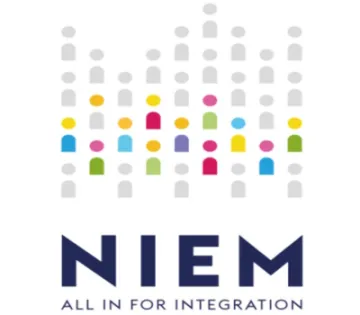How can we Improve Refugee Integration Policies?

The NIEM research project – dedicated to the analysis of asylum seeker and refugee integration policies in Europe – is launching its website “Forintegration.eu”
What are the eligibility criteria for refugees to acquire citizenship in the various member states? What is the average waiting time for a child to be admitted to school once an asylum application is made? At what point do asylum seekers gain access to the labour market? What are the main challenges in terms of integration? What good practices do we have? These are some of the questions that articulate the National Integration Evaluation Mechanism (NIEM) project, the results of which will be published regularly on its website “Forintegration.eu”.
The NIEM project, of which CIDOB forms part, began in November 2016 with the aim of improving the quality and effectiveness of the refugee integration processes in 16 EU member states: Belgium, Bulgaria, Slovenia, Spain, France, Greece, Hungary, Italy, Latvia, Lithuania, the Netherlands, Poland, Portugal, the Czech Republic, Romania and Sweden. The partners include both academic institutions and non-governmental organisations and the project is led by Poland's Institute of Public Affairs.
The NIEM project seeks to develop a mechanism for evaluating national policies of integration of asylum seekers and beneficiaries of international protection. The tool will be used to gather information, identify gaps and measure the progress of refugee integration in the fields of housing, employment, family reunification, training, citizenship, health and political participation. The final goal is to support the authorities in improving integration policies and their implementation, and in creating real prospects for asylum seeker and refugee integration.
"The integration of refugees is Europe’s next great challenge" – admits Justyna Segeš Frelak, Head of the Migration Policy Programme at the Institute of Public Affairs (ISP) in Poland. "It is a challenge because we have not developed common European regulations on integration policies for refugees. What is more, we are faced with a continual lack of knowledge about which legal instruments allow asylum seekers and refugees to effectively integrate into European societies and which slow down the whole integration process".
Anna Pilat, the website’s editor and Migration Policy Analyst at the ISP, explains that “the “Forintegration.eu” portal has been designed to fill this knowledge vacuum” and hopes that the website will become the main source of information on refugee integration in the EU. “We believe that the NIEM project’s website will provide stakeholders with a better understanding of the refugee integration mechanisms in the EU through our own statistical data, scientific reports and all the data, information and resources produced in the framework of the project”.
For Blanca Garcés and Elena Sánchez, both Senior Research Fellows in the migration field at CIDOB and members of the project's research team, “the NIEM project in Spain will be fundamental for generating data on the situation of asylum seekers and refugees, but also for understanding the roles of the various actors (from non-governmental organisations and citizens’ platforms to local and regional governments) in the integration processes. Data is lacking and, without it, it is very hard to design and implement good public policy. This is exactly what the NIEM project intends to address over the next five years".
The “Forintegration.eu” website is designed to be a fast, easily accessible tool on which the content, publications, news and events related to the NIEM project are presented attractively and efficiently. The website also contains a section with up-to-date information on the upcoming events relating to the integration of refugees in various EU countries. The website is available in English but will also include sections in the languages of the 16 countries being studied by the project.
The NIEM project – the National Integration Evaluation Mechanism: Monitoring and improving the integration of international protection beneficiaries – is financed by the Asylum, Migration and Integration Fund (AMIF).
For more information see “Forintegration.eu”, Facebook and Twitter